Games for the development of logical thinking, games for expanding horizons, games for analysis and synthesis, games for the development of creative imagination.
Fish - worm
The game teaches you to argue your answers, broaden your horizons
Required equipment: pictures of animals, birds (can be cut from old books, magazines; postcards).
◈ How to play: first a poem is read:
Bunny loves carrots
Teddy bear - raspberry
Sparrow - mountain ash,
Fish - worm
Avoid, fish, hook.
◈ You name the animal, and the child needs to quickly and correctly say what it eats, for example: cow - hay, dog - bone, mouse - cheese, cat - milk, etc.
◈ You can play as two participants, and more. Periodically change roles with the child, this is a great incentive for him.
◈ We fix: ask the child questions: “What does Carlson love? Cannibal? etc.
◈ Play the reverse game: carrot - hare, grain - bird, horse - hay.
◈ When possible, feed birds, squirrels, animals together. Watch their habits.
◈ We complicate: can a chicken gnaw a bone? Does the dog peck at the grain? Ask the child to argue his answer, if the baby is at a loss, find an explanation together.
One, two, three extra go away
The game helps to form conceptual thinking; cut off the excess (analysis - synthesis)
Required equipment: pictures.
◈ How to play: show pictures of items of the same class, but different groups, for example: bus, car, motorcycle - plane; tram, bus, train - KAMAZ; fire truck, ambulance, grocery car - taxi, etc. Which picture of the four is superfluous? Why?
◈ Fixing: change roles. You can also play the verbal version of this game. It is advisable to take various concepts familiar to the child, for example: “clothes”, “shoes”, etc. Help the child, if he finds it difficult, to justify the answers.
Fables
The game helps shape logical thinking, creative imagination
Equipment needed: ball.
◈ How we play: it is better to play this game with the whole family, then the child will quickly master it.
◈ The leader throws the ball to the player and says a phrase. If this phrase is a fiction, then there is no need to catch the ball, for example: “The wolf is walking in the forest,” the player catches the ball. "The wolf is sitting on a tree" - you do not need to catch the ball. "Girl draws a house" - the player catches the ball. “The house is drawing a girl” - you don’t need to catch the ball, etc.
◈ Try to come up with as many funny, ridiculous phrases as possible.
◈ The one who never makes a mistake wins.
◈ Play this game more often, because a child of this age loves to invent shifters, fables.
◈ Fix it: Play Tales of Tales using short stories. For example: "For Vanya's birthday, the children ate apples, ice cream, cookies and ... salty sweets." The child should correct your mistake and explain why it is wrong.
◈ Do you cook borscht in the kitchen? Use this situation for the game. "I put beets, carrots, cabbage... pear in borscht." Laugh with your child, switch roles.
◈ You can play with pictures. For example: the picture shows summer: the sun, flowers, butterflies and ... a snowman. Ask the child why the snowman is superfluous, what can happen to him? What can I do to keep it from melting?
◈ Next time, you can come up with up to 3-4 fables in the story. For example:
The sparrow sat on the house,
The roof collapsed.
Under the birch with a cat
Polka mice are dancing.
The flies ate the spider.
The fish are catching the fisherman.
The horse sat on the cart,
Drives the rider.
sweet tooth
The game helps to form visual control; develops the perception of size
Equipment needed: drawings of jars of jam, bitten apples.
◈ How to play: show the child several painted jars of jam of varying degrees of filling. Ask which jar Carlson ate the most jam from? Ask him to explain why he made such conclusions? Show pictures of bitten apples. Ask him to answer, which apple, in his opinion, was bitten by a bear, a hare, a sparrow, a caterpillar? Why did he decide so?
◈ We fix: draw traces of a bear, a hare, a mouse. Where are the traces? On the street, ask the child to determine where the footprints of an adult are in the snow or sand, and where is the child? Where are the bird and dog tracks?
"We sat on the sled"
The game teaches you to select the right items for each season; defend one's opinion
Necessary equipment: pictures of the seasons, related items to them.
◈ How to play: show pictures of the seasons and related items. For example: sleds, skis, ice skates, rubber boots, an umbrella, a ball, a net, a basket, a bucket, a spatula, molds, etc. The child must correctly correlate objects with the seasons. Ask them to explain why the sled cannot be put with the summer picture, and the bicycle with the winter picture, etc.
◈ We fix: remember the poems and songs about the seasons: “Let’s go to the garden for raspberries ...”, “We sat on the sleigh, we took the skates ...”. When you go for a walk, ask why did you take these toys with you today?
◈ Making it harder: play a game word game"Vice versa". Name the season first, then its attribute. For example: summer is a scooter, winter is a sled, spring is a paper boat, and what about in autumn? Etc.
Yes, no, speak
The game teaches you to guess the object from the description using the method of leading and cutting questions
◈ How to play: invite the child to guess the vegetable that you have guessed according to its description. For example: a vegetable, sometimes large and small, grows in the garden (carrots). Let your researcher use leading questions (what color is it, what shape is it, what is prepared from it?) With your help, try to give the right answer.
◈ We fix: you can guess any familiar object, gradually complicating the task. For example: "This is an item women's clothing" (dress). Child lists: "Skirt?" (no), "Sweater?" (no), "Long?" (sometimes - yes, sometimes - no). Tell me what happens in the evening or ballroom if it’s hard for the baby to guess.
◈ Let the child try to guess the subject himself, and you will try to guess with the help of questions.
Mysterious smarties
The game teaches to draw conclusions, to prove their correctness
◈ How we play: do you know that the ability to guess riddles forms logical thinking? So, let's guess:
Licks her daughter with her tongue, the heifer will be healthy.
She also feeds with milk, who is the mother? (cow)
◈ When the child answers, ask him how he determined that it was a cow? This is where the fun begins! If the child answers that the cow feeds the calf's milk, say that many animals feed the children's milk. And the main clue is the calf! Only a cow has a calf. Further:
There is a motley head in a cage,
Cleans feathers so cleverly.
What kind of bird, guess
In a cage right... (parrot)
◈ A parrot is usually kept in a cage, it has a motley head, etc. d.
◈ Encourage the child, change roles: the child guesses - you guess.
◈ We fix: you can guess riddles for 5-10 minutes every day. Or maybe the child will come up with his own riddle? For example, here is the riddle of a 4.5-year-old child: “Crawling through the forest, carrying needles on itself.”
◈ And if you start a book and draw your riddles there? Call it "Guess".
➣ Attention: when guessing a riddle, you need to pay attention to distinguishing feature object, phenomenon: if it is rain, then it comes from the sky, from a cloud, because it can be rained from a watering can. For example, we come up with: “Vodichka pours from the sky, like from a watering can” (analogy), etc.
Mystery kids
The game teaches to identify an object by its characteristic features.
Equipment needed: toys.
◈ How we play: put toys on the table that are similar in general terms: animals, birds. Make a riddle: “Soft, fluffy, runs through trees,” etc. The child must guess it and complete it, for example: picks mushrooms, lives in a hollow. Change roles - this develops the logic of the child's speech. Whoever guesses more riddles wins.
◈ We fix: you can play on the street, on the road.
◈ We complicate: in the future, use the verbal version of the game. Take the qualities of objects, their functions: they sit on it or it is necessary to work in the garden, etc.
math circles
The game teaches to work with intersecting and non-intersecting sets
Necessary equipment: hoops large and small, small items, geometric figures.
◈ How we play: put two hoops on the floor, put objects into groups in them, for example: wooden toys in one, plastic ones in the other, or large red circles in one, small blue ones in the other. And if the other should contain all the circles, among which there will be large red ones. How to spread them out? Help your child cross the hoops and place large red circles at the intersection. You can put a small hoop inside a large one - in a large one there are large squares, in a small one - small ones.
◈ We fix: you can lay out objects, pictures. And make a circle of rope or jump rope.
Paired pictures
The game teaches to find semantic connections in paired pictures; forms arbitrary memory
Required equipment: 5-6 pairs of cards with images similar in meaning (can be taken from any board games).
◈ How to play: put paired pictures in front of the child. For example: a tree and a forest, a house and a window, or a log and an ax, a car and a street, etc. The pictures are placed from left to right, the next pair is placed under them. The child must consider two pairs of pictures for 1-2 minutes and memorize. Then remove the right row. The child must remember what lay to the right of the remaining pictures. Ask what is common between the images in the pictures?
◈ Take the next two pairs of pictures and play again. You can play until the child gets tired.
◈ We complicate: you can take three cards that have semantic connections. For example: vase, water, flower; girl, bows, hairbrush - the child must explain their neighborhood. Leave only the first cards. The child must remember the removed.
negatives
The game teaches to draw logical conclusions by the method of negation / exclusion
Required equipment: reference pictures.
◈ How we play: invite the child to guess the riddle: “Kolya and Lena each have one ball, blue and red. Kolya doesn’t have a blue ball, what color is Lena’s ball?”, or “Tanya and Sveta each have a doll. Sveta's doll is not small. What doll does Tanya, Sveta have?”, or “Katya and Tanya are standing to the right and left of the tree. Tanya is not standing to the right of the tree. Where is Katya, Tanya? etc. There are a lot of such variants of questions. Try to come up with such riddles yourself, guessing color, shape, and size.
➣ Attention: If the child does not cope at first, reference pictures can be used, for example, the drawing of a blue and red balloon in the first question, etc.; similar for other tasks.
◈ We fix: When the child solves problems correctly, you can play without reference pictures. Therefore, they can be solved everywhere, when there is free time.
◈ We complicate: we increase the number of denials. For example: “Oli, Petya and Tanya have three balls: yellow, blue and red. Olya does not have a yellow or blue ball, Petya does not have a blue one. Which child has a yellow ball? What color are the balls of Olya, Petya and Tanya?
➣ Attention: did you buy gifts for your relatives? Play around. Make a riddle: “I bought my dad and grandpa pants, jeans and a sweater. I bought my grandfather neither jeans nor trousers. What did I buy for dad, and what for grandfather? There are many such everyday examples, use them for play and for the benefit of the child.
Thinking for younger preschoolers
The game "Who sleeps where."
Goals: develop mental abilities, ideas about basic geometric shapes; fix the name of the color; to form selection actions according to the sample.
: cards divided into sectors (each sector has a geometric figure).
Description: children remember the names of acquaintances human figures. The teacher distributes cards with "beds" for each of the figures. “Little men” must be put to “sleep” in beds suitable for them, that is, put all the figures on cards so that they coincide with those drawn, for example: a person having the shape of a square lies down in a bed of the appropriate shape.
The game "Endless classification".
Target: develop classification skills, attention, memory.
cards with images of animals, some other items.
Description: lay out all the cards. Invite the child to separate all the cards with pictures of animals. Further, animals are divided into wild and domestic. From the domestics, in turn, choose those who have hooves, and sort them into those with horns and those without horns. You can classify animals according to their characteristics: fluffy - smooth-haired, predator - herbivore, swims - does not swim, jumps - does not jump, etc.
The game "In the garden, in the garden ...".
Goals: to develop the skill of classification; help to understand the order of things.
game material and visual aids: cards with images of a garden, a garden, a forest; figures of vegetables, fruits, berries, mushrooms (cut out of cardboard).
Description: invite the child to correctly distribute the cut out figures, remembering where it grows: vegetables - in the garden, berries and mushrooms - in the forest, fruits - in the garden.
Game "What do we put in the fridge?".
Goals: develop the skill of classification; help to understand the order of things.
Game material and visual aids: cards with images of a refrigerator, wardrobe, dish cabinet, bookcase, images of items stored in the refrigerator, wardrobe, etc.
Description: tell the child a story about how one boy decided to indulge: he pulled out all the food from the refrigerator, clothes from the closet, as well as all the dishes and books. All things got mixed up, and he could not put them away, but the boy's mother will see and be upset. “Let's help the child and put everything in its place: food next to the refrigerator, clothes next to the wardrobe, books next to the bookcase, dishes in front of the cupboard.”
Find the picture game.
Target: develop memory, attention.
Game material and visual aids: pictures of the same size with different pictures.
Description: show the child the picture. He must carefully consider it. Invite the child to turn away and lay out all the pictures, including the one previously considered. Offer to find a picture that he has already seen.
The game "Guess the picture."
Target: develop attention, auditory perception, speech.
Description: Post multiple pictures with different images. For the first lessons, you should choose a drawing with a single object. Invite the child to choose a picture, but do not say which one. Ask the child questions, the answers to which will lead to a solution. For example: “Does the picture you chose show an animal? Is it a wild or domestic animal? Is it with horns? With hooves? He has a long tail? Etc.". Offer to switch roles: the teacher makes a picture, and the child asks questions.
Game "What am I doing?".
Target: develop attention, imagination.
Description: invite the child to play interesting game: the teacher imitates certain actions, and the child must guess what is meant by this. For example: the teacher folds his fingers as if holding a pencil and runs his hand over an imaginary paper. The child must guess what the teacher “draws” or “writes”. Simple, understandable gestures should be shown (hitting with a hammer, eating with a spoon, drinking from a cup, throwing a ball, etc.). Then switch roles.
The game "Who does it."
Target: develop speech, observation, logical thinking.
Description: Invite the child to guess who in question in the story. List the actions of a person. For example: comes home from work, has dinner, plays with you, goes with us to the park, circus, etc. (Mom or dad.) Cuts hair, does hairstyles, works in a hairdresser. (Hairdresser.) He treats children and adults, wears a white coat, listens with a phonendoscope. (Doctor.)
The game "Who has it."
Target: develop speech, attention, memory, observation.
Description: see the game "Who does it" (items are listed that cause associations with human actions). Explain the rules to the child and start listing. For example: who has round brown glasses, a green jacket and a present for you? (Grandmother's.) Who has a white coat, a phonendoscope, a white cap? (At the doctor's.) Etc.
The game "Gives a cow ...".
Target: develop attention, memory.
Game material and visual aids: cards with images of animals, products obtained from animals (milk, eggs, wool, etc.).
Description: arrange the cards in random order. Invite the child to put an image of what this animal gives us next to the image of each animal. For example: chicken - egg, feathers (you can draw a pillow); cow - milk (cottage cheese, sour cream, kefir); goat - downy yarn (draw socks, mittens), etc.
The game "Narrow - wide."
Goals: introduce the concepts of "narrow - wide"; develop matching skills.
Game material and visual aids: two balls of different sizes.
Description: invite the child to roll the balls along the path, fenced with cubes. Make two stripes - one for a small ball, the other for a large one. Roll a small ball down a wide lane, then try rolling a big ball down a narrow one. Encourage the child to explain why the ball cannot fit on the small track. Enter the concept of "narrow - wide" into the child's active dictionary. Experiment: run toys of different sizes along the paths. At the end of the game, summarize: a wide path is for large toys, a narrow path is for small ones.
The game "Comparison of values".
Target: develop a skill comparative analysis, speech, logical thinking.
Game material and visual aids: wide and narrow strips of paper, cubes.
Description: invite the child to build houses for the mouse and for the bunny: “Do you think we will build houses of the same size for them?” Encourage the child to conclude that the mouse house should be smaller than the bunny house.
After the houses are ready, tell them that the animals asked to put paths for guests in front of their housing. But so that the guests do not confuse, the path in front of the mouse house should be narrow, and in front of the hare - wide. Show the child how to determine which of the tracks (paper strips) is wider by overlapping them. Let the kid himself distribute the paths between the houses.
The game "How to distinguish them?".
Target: to develop the skill of comparative analysis of objects by superimposing them on top of each other.
Game material and visual aids: identical geometric shapes with a slight difference in size (cut out of paper).
Description: tell the child that the figurines are cakes for dolls. Our scattered dolls have mixed up all the cakes and cannot determine which is which. After all, a cake for Masha is bigger than a cake for Olya, and a cake for Sveta is the smallest. Help the puppets. Let the child think about how this can be done. Show him how, by putting the figures on top of each other, find out which cake is larger and which is smaller. Give the dolls their dessert.
The game "Pick up the Christmas tree."
Target: develop the skill of comparison, the ability to use the words "above - below", speech.
Game material and visual aids: Christmas trees (cut out of paper) of different sizes.
Description: draw a house. Tell the child about the boy who lives in this house. Draw snowdrifts near the house. Explain what's coming soon New Year. So, a Christmas tree is definitely needed: "Help me choose such a Christmas tree so that it fits in the house." Place the Christmas trees on another sheet of paper. If the child does not cope with the task, show him how to compare the size of the Christmas tree and the house by attaching a tree to it. Applying Christmas trees, comment: “No, this Christmas tree will not suit us, it is higher than the house, it will not fit there. And this Christmas tree is too small, it is lower than the house.
The game "Does it happen?".
Target: help to study the category "above - below".
Description: draw a multi-storey building, next to it is a village house of the same size. Ask the child if it is possible for these houses and real life were the same size? To find out why this cannot be (many floors - one floor), then a multi-storey building is higher, and a rustic one is lower.
The game "How are they similar?".
Target: develop attention, observation.
Description: show the child two objects, ask him to tell you what these objects have in common, then how they differ. For example: "Consider a ball and a cube of the same color." General: both items are toys, both are the same color. Differences: the ball is round, the cube is square, the ball is large, the cube is small. Complicating the game, show the child objects with less pronounced differences, for example: two cars of the same color, but with different wheels, body shape, etc.
The game "Freight train".
Target: develop logical thinking.
Game material and visual aids: cards with the image of objects of different categories (dishes, furniture, animals).
Description: Invite the child to play on the train. Trains go to different cities and carry different goods. For example, a train going to Moscow carries dishes. Therefore, on the pictures-wagons, objects of this category should be drawn. A train to another city carries wild animals, etc. To complicate the game, lay out cards of different categories, but made of the same material, for example, wooden spoons, wooden chairs, wooden cubes, boards, etc.
Game "Guess what I'm talking about."
Purpose: to develop logical thinking, memory, attention.
Description: invite the child to find an object in the room. Describe its location, color, shape, material from which it is made, etc. For example: “What I thought of is now under one of the chairs in this room. This item is small, round, rubber, red in color. Complicating the game, in the future, do not name the place where the object is located, listing all its other features.
The game "What happens ...".
Target: to develop speech, memory, the skill of generalizing objects by feature or property.
Description: The teacher asks the child questions, and he answers them. For example: "What happens yellow color? (Chicken, sun, etc.); "What grows on a tree?"; "Who lives in the forest?" etc.
The game "What does it look like".
Target: to develop the skill of comparison.
Description: invite the child to play questions and answers. For example: "What is as round as a ball?" (Watermelon, orange, apple, etc.); "What is as white as snow?"; "What is as sweet as sugar?" etc.
Game "Show me the way"
Target: develop fine motor skills, logical thinking.
Description: draw in different places small images of animals and in the distance from them - what these animals eat. For example, if a hare is drawn on a sheet, then there should be a carrot or cabbage, a bear - a barrel with the inscription "Honey", a mouse - cheese, etc. Invite the child to draw lines that will show the beast where his favorite food lies. You can play according to the themes: “People - clothes”, “Animals - dwelling”, “Tree - leaf”, etc. To complicate the task, draw several trees or flowers in the middle of the sheet, explaining to the child that the path should bypass them.
In this article:
From 2 to 3 years old, children begin a new period in life - a time of utmost interest in everything that surrounds them. Children ask thousands of questions and often do not even wait for answers to them, coming up with more and more new ones for their parents. At this age, logic begins to develop in babies, and the task of adults is not to miss the moment and contribute to this process.
In order to understand what the development of logic in children from 2 to 3 years old should be based on, you need to know exactly what they have a keen interest in. Based on the interest of children, it is possible to carry out exciting and effective work with them, which will be based on special exercises, exercise games and just games.
With children 2-3 years old, you need to talk a lot and productively, giving them the opportunity to speak out and express their own point of view.
There are unwritten rules on which the development of logic in babies at an early age should be built. By observing the following rules, parents will contribute to the development of the inherent potential of children.
- Do not limit the baby's space with a playpen, crib, fences. Knowing the world, the baby will learn to think logically.
- Make sure that the child regularly receives new impressions and sensations, thanks to them he will be able to cultivate curiosity in himself.
- Let the baby feel completely safe, this feeling will give him the opportunity not to be afraid of new discoveries.
- Be confident in the strength of the baby, abandoning the idea that his choice is not justified. If a child has shown a keen interest in something, then most likely he is able to cope with mastering it.
- Do not limit your child's fantasies to certain rules. Give him the opportunity to improvise, for example, if he depicts an apple as blue, and a dog as larger than a person.
Additionally, parents need to remember that the development of logic in babies 2-3 years old is positively influenced by exercises and games, 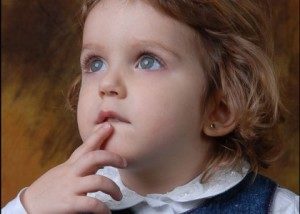 built on the use of both hands. In this case, both hemispheres of the brain will work at once.
built on the use of both hands. In this case, both hemispheres of the brain will work at once.
In addition, it is imperative to try to give the child the opportunity to communicate as much as possible with new people, especially peers, without limiting his social circle to relatives alone.
Features of the development of logical thinking
For children at the age of 2-3 years, it is absolutely natural to learn the world through communication and helping adults. That is why babies spend so much time watching their parents, older brothers and sisters and offering them their help.
You should not limit such impulses of babies, remembering that such 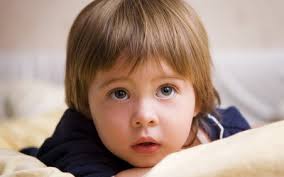 how they get acquainted with reality, and also that this has a positive effect on the development of their logic at an early age.
how they get acquainted with reality, and also that this has a positive effect on the development of their logic at an early age.
It is important that parents take the time to explain to their little ones the cause and effect relationships, ranging from wet cat footprints on asphalt to sand, which, when dry, is not suitable for building a tower.
One should not think that these things are obvious to children and do not require explanation. The development of logic in toddlers early age is located initial stage, so they are not yet able to trace many logical chains on their own.
Games and exercises for the development of logical thinking in children of 2-3 years old, you need to choose such a level of complexity that the children's brain is actively working and at the same time it is not too difficult for them. Additionally, you should think about proper diet nutrition for the baby, since the number of vitamins and minerals he receives daily affects the development of logic and overall development as a whole.
Exercise-games for toddlers
Exercise-games for children 2-3 years old must necessarily captivate and encourage them to act. So, for example, with a baby you can work out:
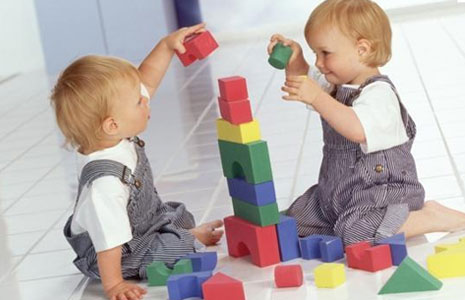
At the end of the exercises, if the kid coped with the task, you need to talk with him about why he acted in this way.
Exercises for the development of logical thinking
In the fourth year of life, children can choose games based not only on visual, but also on verbal and figurative perception. That is why assignments can be oral.
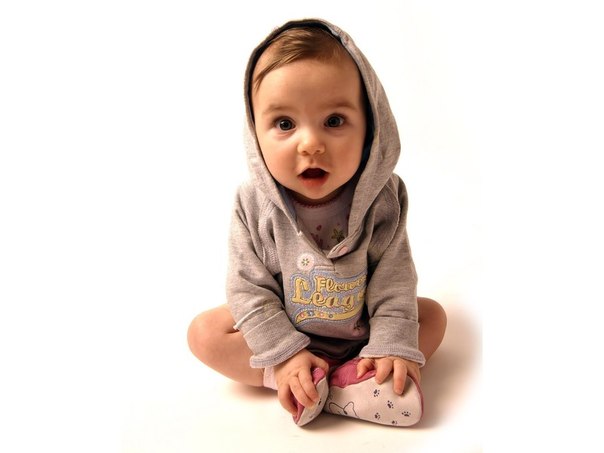
Do not forget about the dialogue with the baby. Ask him as many leading questions as you can about everything he has to deal with in life, starting with the simple “Why eat porridge in the morning?” and “Why wash your hands?” and ending with the more difficult "Why is it raining?" and “Where does the snow go in spring?”.
Below are interesting options for games for children 2-3 years old, stimulating the development of logic at this age.
Find the ball in your hand
An adult draws on a sheet a figure of a man or animal, a cartoon character or the child himself. Above it, he draws several balloons with tangled threads, one of which reaches the hand of the main character of the drawing. The task of the kid is to run his finger along the thread and find the right ball.
If the task is not particularly difficult for the child, you can complicate it by increasing the number of balls or by offering to find the right one without using your finger as an assistant.
Find the right color
The sheet depicts objects of different colors - for example, three or four balls, a square or a triangle. The kid is asked to find an object that is neither red nor green, neither blue nor yellow, and so on. Such a game not only accelerates the development of the logic of kids 2-3 years old, but also helps them consolidate their knowledge of colors.
What will be needed?
This game has two options.
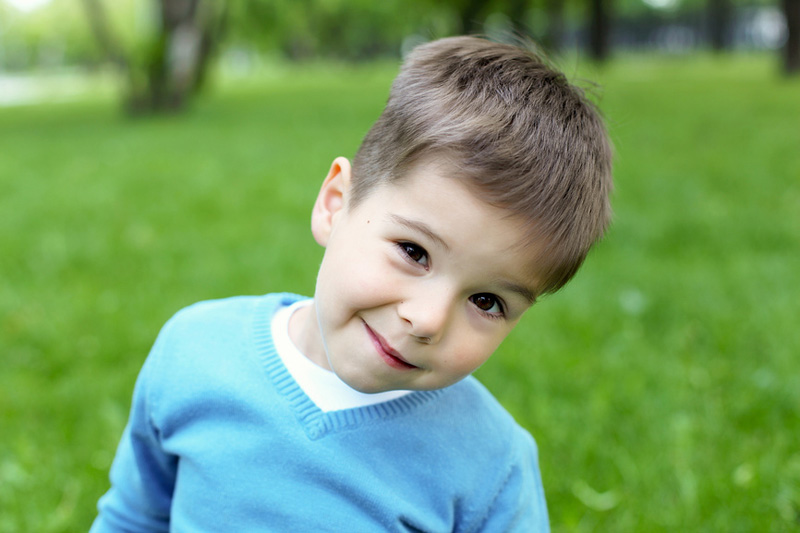
Find a couple
An interesting game for the little ones, well stimulates the development of logic. Animals are drawn on a piece of paper and different options for foods that they could eat, after which they ask the children to pick up suitable pairs, for example, a cat - milk, a rabbit - a carrot, a bear - honey, and so on.
Draw some more
A variety of objects with missing details are drawn on a piece of paper, after which they ask the child to find these details and finish them. It can be a house without a door, a cat without a mustache, a dog without a tail, and so on. If it is difficult for a child to immediately find the missing elements, then you can draw them side by side, offering to select the ones you need.
Julia Falchuk
Synopsis of GCD on FEMP in the 2nd junior group.
The development of logical thinking and attention in children 3-4 years old.
Topic: "Teremok".
Program content: develop logical thinking, Attention, memory, fantasy, exercise in counting up to 5. To form the ability to correlate the number of objects with the number. Learn to recognize geometric shapes. Consolidate the concept "long short". Learn to compare the number of objects, fix colors, Cultivate friendships, love for one's neighbor, empathy.
Equipment:
animal toys: mouse, frog, hare, fox, bear; Teremok, flags of different colors. Dispensing material: stripes of blue, red and yellow flowers, cards with tasks, geometric shapes.
Lesson progress:
The children sit at the tables, in front of them on the table is a teremok.
caregiver: Stands in the field of a teremok-teremok
He is not low, not high.
As the mouse ran across the field,
I saw Teremok. (pulls out mouse toy)
And 3 paths lead to the tower, one long (strip of blue color, the other is shorter (red stripe) and the shortest (yellow stripe). The mouse does not know which path to get to the tower faster? What color are the tracks? Guys, what do you think? Yes, guys, it’s right, along the short path, the yellow mouse, quickly run to the house, and now we need to correctly indicate to it where the short path is. You have 3 strips on your tables, they are different in length, let's have them comparable and expand by order: first the longest, then the shorter and then the shortest strip.
Well done guys, they coped with the task, and the mouse ran to the tower along the shortest yellow path and began to live there and sing songs. How many animals began to live in the house? (1)
caregiver: It stands in the field of a teremok-teremok.
The frog jumps in the swamp.
She wants to live in the tower. (takes out a frog)
While the frog was jumping, she lost her beads. crying poor: “- That's the trouble! Help, kids!

Well, guys, help the frog? Look, you have beads on your table, but only one bead fell out, look which bead is missing? (circles of red and green colors lie nearby, you need to insert the missing circle along exemplary: red, green, yellow.) Children lay out the beads, then compare them with the sample. Well, you coped with this task, well done, the frog is very glad what beautiful beads turned out, but unfortunately the frog has forgotten everything and asks you to remind her, she will name the color, and you show a bead with that color, be attentive. (children do the task). Now the happy frog galloped straight to the tower, and began to live there with the mouse. How many animals are in the house now. (2)
Here a bunny jumped out on the edge. Do you know that the bunny loves to be played with, let's play with it.
Physical education minute "Bunny".
"It's cold for a bunny to sit,
You need to warm up your paws.
Paws up, paws down, pull up on your toes.
We put the paws on the side, on the toes, hop-hop-hop.
The bunny ran to the tower and asks: "Who lives in the little house? Let me in the little house?" A frog and a mouse answer: "Guess our riddles, then let us in."
Guys, let's help the bunny solve riddles? (Children complete tasks on the cards "What is superfluous?", for example: three red circles and one blue one, which circle is extra)
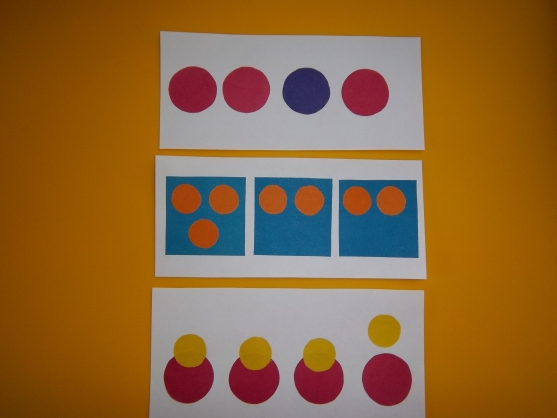
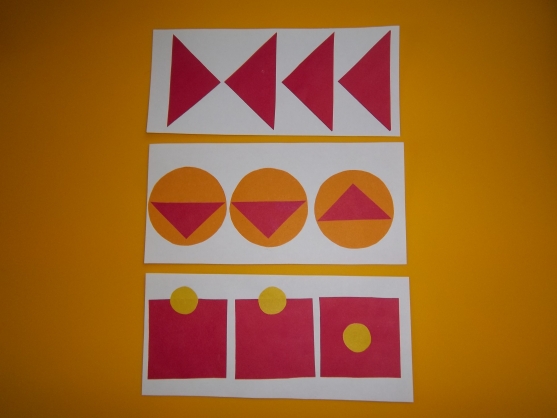
What good fellows you guys are, helped the bunny, and the mouse and the frog let him in, and he began to live together, how many animals are in the house? (3)
Hush, hush, don't make noise, someone is coming to us here. Of course, fox. She asked, the same to the tower and they let her in. Chanterelle decided to decorate the tower with flags. The mouse is red, the frog is green, the hare is blue, the fox is yellow (sets flags, children remember which flags are set, what color) Night fell, everyone closed their eyes. (Remove 1 checkbox.)
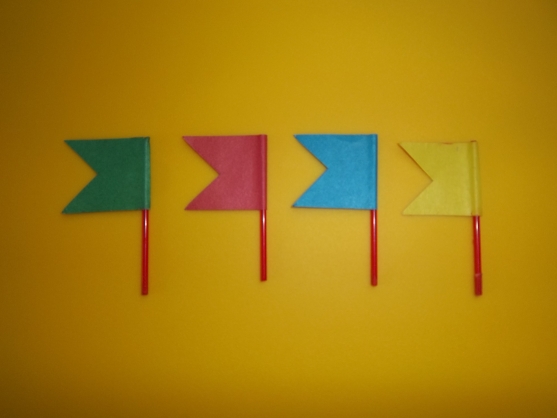
In the morning everyone woke up, opened their eyes and saw that one flag was missing. What? (the game is repeated several times). How many animals live in the tower? (4)
And a bear is walking through the forest. Suddenly I saw a tower - like a glow t: "You let me into the tower!" The animals were scared. Will the bear fit into the tower (No) why? (the bear is very big) What to do? After all, it will be bad for the bear to live on the street! (children decide to build new house, large enough for everyone to have enough space).
Children build a house from cut pieces (2 rectangles and 2 triangles).

Well done guys, what a beautiful and big house you have turned out. How many animals will live in it? (5) Now tell me, what fairy tale did you visit? Did you like the fairy tale? And I liked you in class, were attentive They answered my questions and did the right things.
